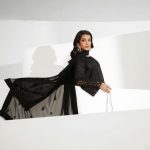Sharkstooth scrim is a woven fabric featuring a distinctive triangular pattern that manipulates light uniquely. You’ll find its tightly interlaced cotton or polyester fibers scatter light evenly, softening shadows while balancing brightness and transparency. This makes it ideal for stage effects, projection screens, and architectural uses where glare reduction and visual clarity matter. Its optical qualities come from the precise weave geometry, which controls light reflection and diffusion. Keep exploring to see how this fabric transforms design and lighting.
Table of Contents
Key Takeaways
- Sharkstooth scrim is a woven fabric featuring a triangular pattern that influences light diffusion and partial transparency.
- Its interlaced warp and weft threads create distinct optical effects by controlling light reflection, transmission, and scattering.
- The unique weave pattern softens shadows and reduces glare, providing balanced brightness and enhanced visual depth.
- It offers superior optical clarity and durability, making it ideal for stage backdrops, projection screens, and architectural applications.
- Installation requires careful tensioning and handling to maintain its optical properties and ensure uniform light diffusion.
The Origins and Composition of Sharkstooth Scrim
Although sharkstooth scrim‘s unique optical properties have fascinated scientists, understanding its origins and composition is essential to fully appreciating its behavior.
You’ll find that sharkstooth scrim is a type of woven fabric, traditionally made from cotton or polyester fibers. Its name comes from the distinctive small, repeating triangular pattern resembling a shark’s tooth. This pattern forms due to the specific interlacing of warp and weft threads, which influences how light interacts with the fabric.
When you examine its composition, you’ll notice the fibers’ density and thread alignment play a vital role in its partial transparency and light diffusion. Knowing these details helps you grasp why sharkstooth scrim can manipulate light so effectively, making it ideal for applications like stage backdrops and projection screens.
Distinctive Weave Patterns and Their Effects
You’ll notice that the unique geometry of sharkstooth scrim’s weave directly shapes how light spreads across its surface.
This pattern creates subtle variations in visual texture that can change depending on your viewing angle.
Understanding these effects helps you control both light diffusion and the overall appearance in your project.
Pattern Geometry Influence
When you examine Sharkstooth Scrim, the distinctive weave patterns play an essential role in shaping its optical properties.
The geometry of these patterns—typically a series of interlocking diamond shapes—controls how light interacts with the material. You’ll notice that the angles and spacing of the weave determine the scrim’s directional reflectivity and transparency.
By adjusting the size and alignment of the sharkstooth shapes, manufacturers can fine-tune how much light passes through or bounces off the surface. This geometric precision affects not only the scrim’s strength but also its visual texture.
Light Diffusion Effects
Because the distinctive weave patterns of Sharkstooth Scrim manipulate light in unique ways, they greatly enhance its diffusion effects.
When you shine light through this scrim, its interlaced fibers scatter rays evenly, softening shadows and reducing glare. This scattering occurs because the alternating tight and loose weaves break up direct light paths, creating a gentle, uniform glow rather than harsh illumination.
You’ll notice how this diffusion helps in applications like stage lighting or photography, where balanced brightness is essential. Instead of sharp beams, the light diffuses smoothly across surfaces, improving visibility without overwhelming contrast.
Visual Texture Variations
The unique weave patterns of Sharkstooth Scrim don’t just influence how light diffuses; they also create distinct visual textures that catch the eye.
When you look closely, you’ll notice the alternating tight and loose weaves form a subtle checkerboard effect. This pattern adds depth and complexity, giving surfaces wrapped in Sharkstooth Scrim a tactile feel, even if you can’t physically touch them.
Depending on the angle and lighting, these textures can appear more pronounced or softened, enhancing the overall visual experience.
By using this fabric, you’re not only controlling light but also introducing a layered texture that complements architectural and design elements.
This interplay between pattern and light makes Sharkstooth Scrim a versatile choice for dynamic, visually engaging spaces.
How Sharkstooth Scrim Interacts With Light
You’ll notice that sharkstooth scrim scatters light in unique ways, creating effective diffusion.
It both reflects and transmits light, balancing brightness and shadow. Understanding this interaction helps you see why it influences visual clarity so markedly.
Light Diffusion Mechanisms
When you shine light onto sharkstooth scrim, its unique texture scatters the rays in multiple directions, creating a soft, diffused glow. This diffusion happens because the scrim’s tiny fibers and patterns break up light, reducing harsh shadows and glare. You’ll notice how this effect enhances visual comfort and image clarity in various applications.
Here’s a quick look at how the scrim’s structure influences light diffusion:
| Feature | Effect on Light Diffusion |
|---|---|
| Fiber Density | Increases scattering points |
| Pattern Geometry | Alters diffusion angles |
| Material Thickness | Controls diffusion intensity |
| Surface Texture | Enhances softening of light |
| Wavelength Range | Affects color diffusion balance |
Understanding these helps you optimize sharkstooth scrim for your lighting needs.
Reflective and Transmissive Behavior
Beyond just diffusing light, sharkstooth scrim also reflects and transmits rays in ways that shape how you perceive brightness and contrast.
When light hits the angled fibers, some rays bounce off, creating subtle reflections that enhance highlights without overpowering the scene. At the same time, the scrim allows a controlled amount of light to pass through, maintaining a balance between illumination and shadow.
This selective reflection and transmission reduce glare and soften harsh edges, making the overall image appear more natural. You’ll notice this interplay especially in environments with varied lighting, where the scrim modulates intensity, preventing areas from becoming too bright or too dark.
Understanding this behavior helps you appreciate how sharkstooth scrim fine-tunes visual depth and dynamic range in practical settings.
Impact on Visual Clarity
How does sharkstooth scrim influence the sharpness and detail you see in an image? It subtly diffuses light, reducing harsh glare while maintaining overall clarity. This balance enhances image sharpness without washing out fine details. When light passes through the scrim, it scatters in a controlled way, preventing visual distortion.
Here’s how sharkstooth scrim interacts with light to impact visual clarity:
| Property | Effect on Visual Clarity |
|---|---|
| Light Diffusion | Softens glare, preserves detail |
| Transparency | Allows clear visibility |
| Surface Texture | Breaks up reflections |
Applications in Theater and Stage Design
Since Sharkstooth scrim controls light and visibility so effectively, you’ll find it invaluable in theater and stage design.
You can use it to create stunning visual effects, like making actors or props appear and disappear smoothly. Its unique weave lets you project images or lighting through the scrim while keeping the audience’s view crisp when the scrim is lit from the front.
You’ll appreciate how it conceals backstage elements without blocking airflow or sound. Plus, it’s lightweight and easy to handle, making quick set changes a breeze.
Whether you’re aiming for dramatic reveals or subtle scene alterations, Sharkstooth scrim gives you precise control over what the audience sees, helping you craft immersive, dynamic performances.
Use Cases in Architectural and Interior Design
You’ll find several compelling uses for Sharkstooth scrim in architectural and interior design.
You can use it as a dynamic room divider, letting light filter through while maintaining privacy. Its unique optical properties create subtle visual effects, adding depth and texture to spaces without overwhelming them.
When applied to windows or glass walls, Sharkstooth scrim reduces glare and diffuses natural light, enhancing comfort and ambiance.
You can also integrate it into ceiling panels or wall coverings to introduce a sophisticated pattern that changes with your viewpoint.
Additionally, designers use it in custom lighting installations, where its translucent qualities amplify illumination while softening harshness.
Advantages Over Other Scrim Materials
Although many scrim materials offer practical benefits, Sharkstooth scrim stands out due to its superior optical clarity and versatile light diffusion.
When you use Sharkstooth scrim, you get a balanced transmission of light that reduces glare without sacrificing brightness. Unlike traditional scrims, it maintains sharpness and color fidelity, making your visuals more vivid and true to life.
Its unique weave pattern also provides enhanced durability, resisting wear better than standard scrims. Plus, its texture creates subtle depth and dimension, which can transform ordinary lighting into something dynamic and engaging.
If you want a material that combines aesthetic appeal with functional performance, Sharkstooth scrim offers advantages that other scrims simply can’t match, ensuring your design and lighting goals are met with precision.
Techniques for Installing and Handling Sharkstooth Scrim
When installing Sharkstooth scrim, handling it with care assures you preserve its unique optical qualities and durability. You’ll want to follow specific techniques to guarantee a smooth application and maintain the scrim’s integrity.
Start by gently unrolling the material to avoid creases or damage. Next, use a clean, flat surface for cutting to achieve precise edges without fraying. When attaching, apply even tension to prevent wrinkles and maintain consistent texture.
Keep these key tips in mind:
- Use sharp tools for clean cuts.
- Avoid excessive stretching during installation.
- Handle with clean hands or gloves to prevent contamination.
- Store rolls properly to prevent deformation or damage.
Future Trends and Innovations in Scrim Technology
Mastering the installation techniques preserves the current strengths of Sharkstooth scrim, but the future holds exciting possibilities that could redefine its capabilities.
As you explore innovations, expect advancements like smart scrim embedded with sensors to monitor environmental changes or adaptive optical properties that respond to light conditions. You’ll likely see integration with sustainable materials, making scrim more eco-friendly without sacrificing durability or performance.
Additionally, improvements in manufacturing techniques could enhance the precision of the sharkstooth pattern, optimizing light diffusion and reflection even further.
By staying informed about these trends, you can leverage cutting-edge scrim technologies to elevate your projects, offering superior visual effects and increased functionality in diverse applications.
Stay ahead with innovative scrim technologies to enhance visuals and functionality across all your projects.
The future of scrim technology is bright, and you’re positioned to benefit from its evolution.
Frequently Asked Questions
Can Sharkstooth Scrim Be Used Outdoors in Varying Weather Conditions?
You can use sharkstooth scrim outdoors, but you’ll want to guarantee it’s weather-resistant or treated for durability. Otherwise, exposure to rain, sun, and wind might degrade its performance and lifespan over time.
What Cleaning Methods Are Recommended for Sharkstooth Scrim?
You should gently vacuum or use a soft brush to remove dust from sharkstooth scrim. For stains, spot clean with mild detergent and water, then air dry. Avoid harsh chemicals to keep it intact and vibrant.
Is Sharkstooth Scrim Environmentally Sustainable or Recyclable?
You won’t believe how eco-friendly sharkstooth scrim can be! Since it’s often made from recyclable materials, you can recycle it easily and reduce waste, making your projects greener without sacrificing style or function.
How Does Sharkstooth Scrim Affect Sound Acoustics in a Room?
You’ll find sharkstooth scrim minimally absorbs sound, so it won’t greatly improve acoustics. Instead, it mainly diffuses sound waves, reducing echoes without dampening noise, making your room’s acoustic environment more balanced but not quieter.
Are There Any Health or Safety Concerns When Working With Sharkstooth Scrim?
You might imagine dusty fibers swirling in the air, but when working with sharkstooth scrim, you shouldn’t worry much. Just wear gloves and a mask if cutting—it’s generally safe, with minimal health or safety risks.
- Does Chiffon Fabric Stink - July 15, 2025
- Does Chiffon Fabric Affect the Economy - July 15, 2025
- Does Cotton Fabric Have a Nap - July 15, 2025







